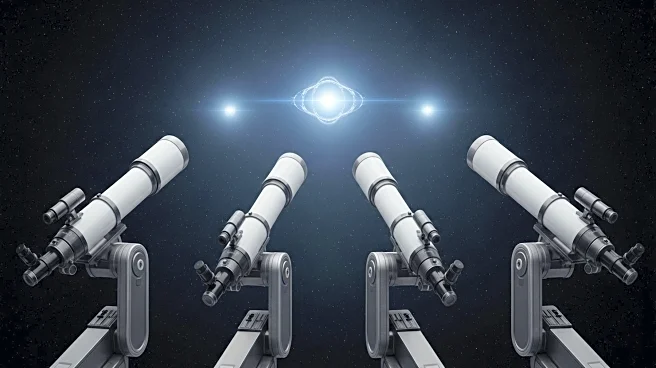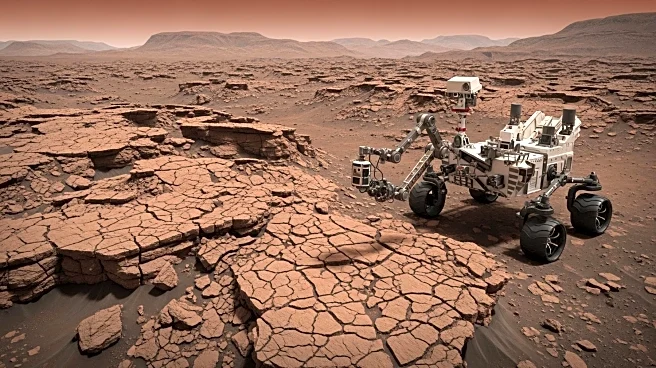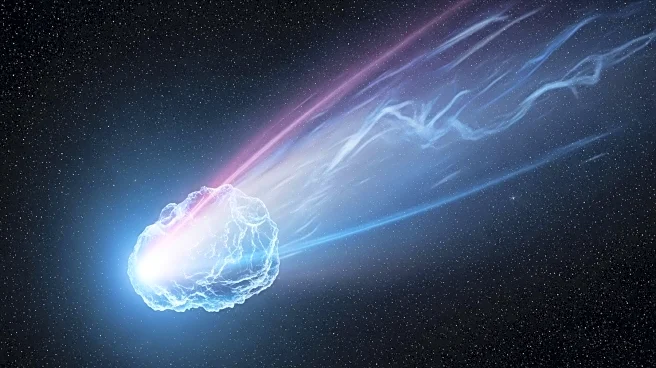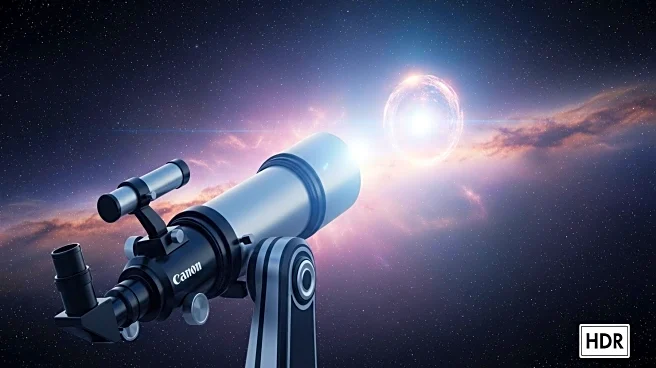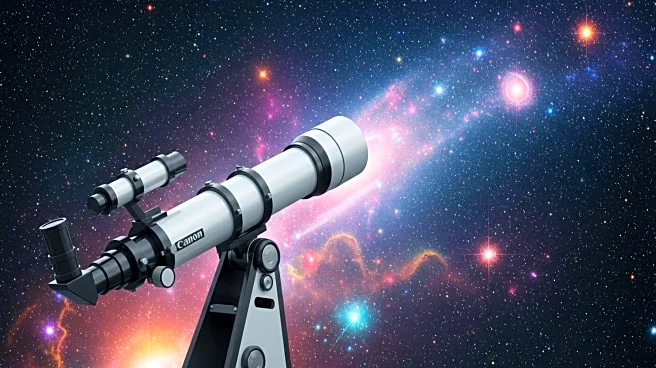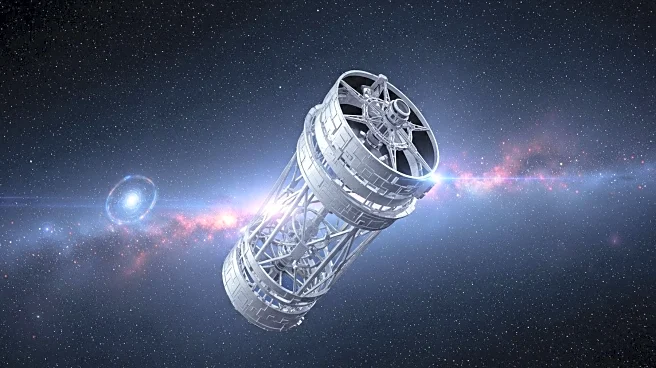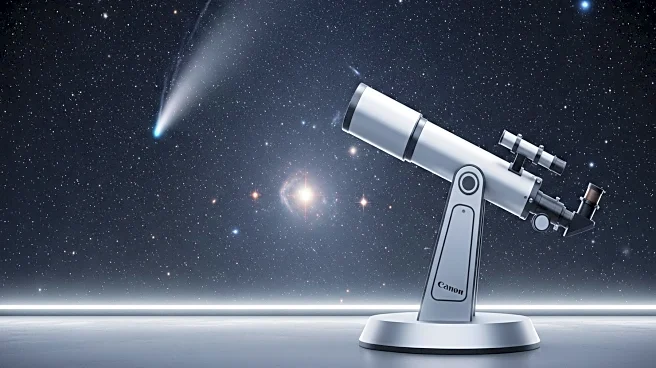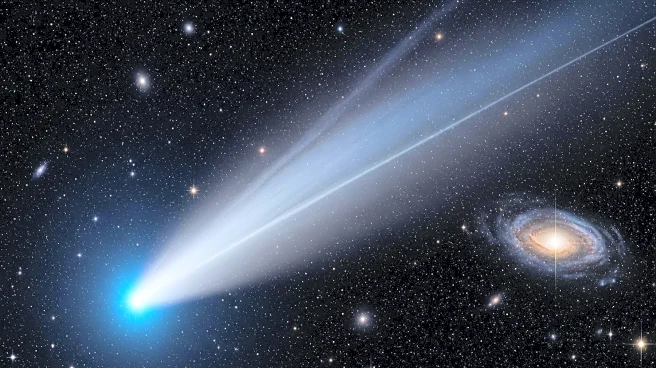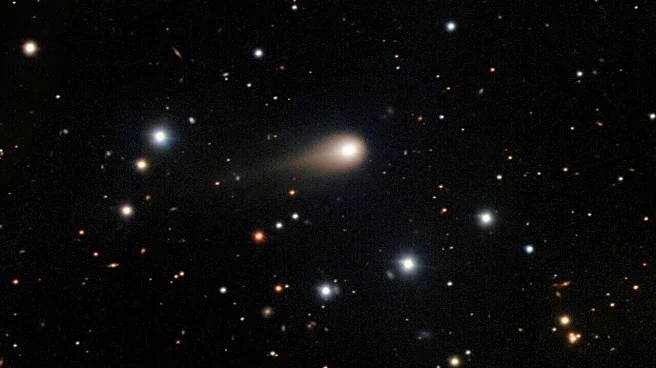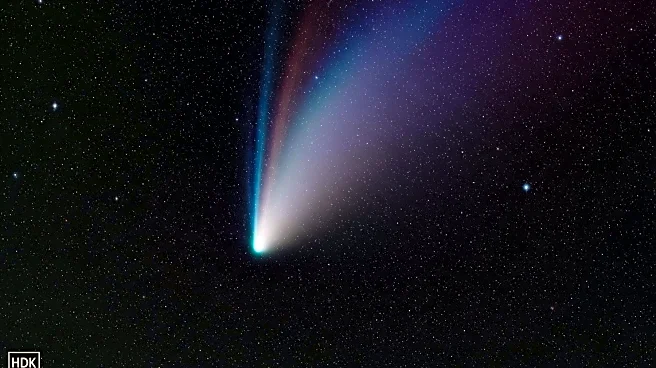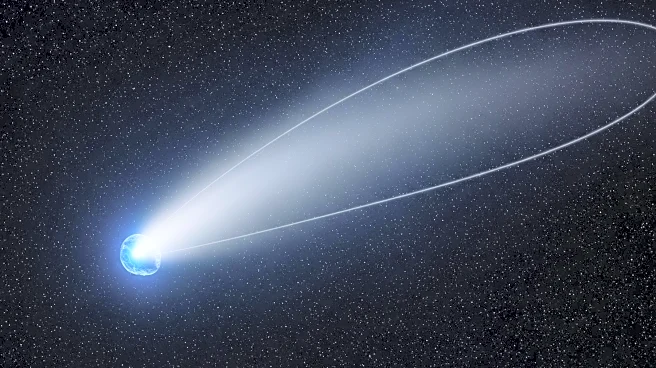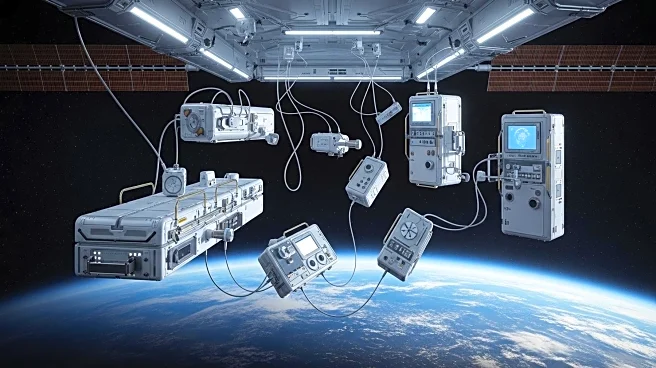What is the story about?
What's Happening?
The interstellar object 3I/ATLAS, only the third of its kind detected, is exhibiting unexpected characteristics as it travels through the solar system. Observations from NASA's Hubble, SPHEREx, TESS, and James Webb Space Telescope have revealed that the object, believed to be a comet, has a higher proportion of carbon dioxide gas in its coma than expected. This unusual composition, along with its activity at a greater distance from the Sun than typical comets, suggests that 3I/ATLAS is a unique object. The object's origins remain unclear, and it continues to intrigue scientists as it approaches the inner solar system.
Why It's Important?
The study of 3I/ATLAS provides a rare opportunity to understand the properties of interstellar objects and their potential differences from solar system comets. The object's unusual characteristics could offer insights into the conditions and processes in other star systems. Understanding its composition and behavior may also inform theories about the formation and evolution of comets and other small bodies in the universe. The findings could have implications for the study of interstellar material and its interaction with the solar system.
What's Next?
As 3I/ATLAS continues its journey through the solar system, scientists will conduct further observations to gather more data on its composition and behavior. The object is expected to make close flybys of Jupiter, Mars, and Venus, providing additional opportunities for study. Researchers may use NASA's Mars Reconnaissance Orbiter and Juno probe to observe the object more closely. These observations could help determine the object's origins and provide a better understanding of its unique characteristics.
AI Generated Content
Do you find this article useful?
